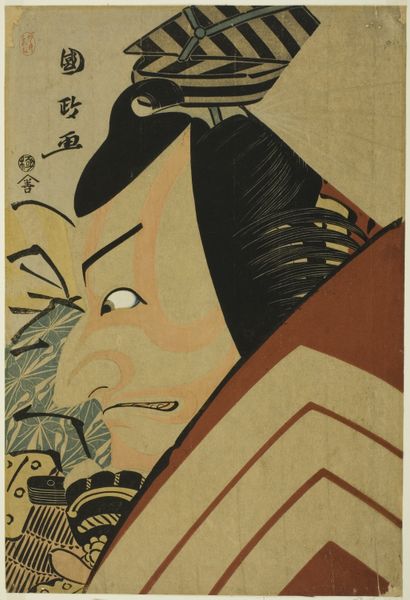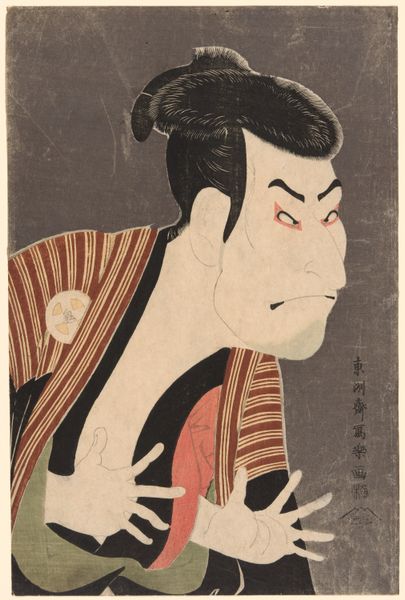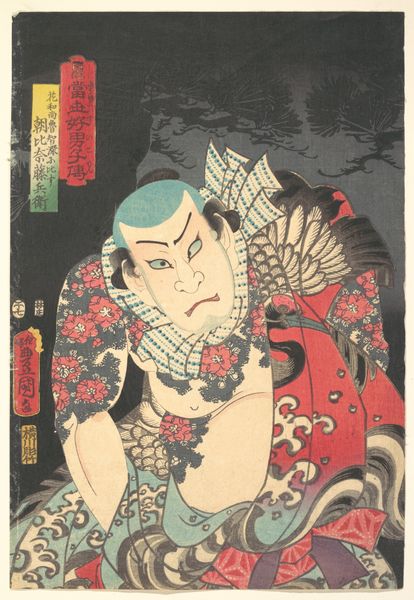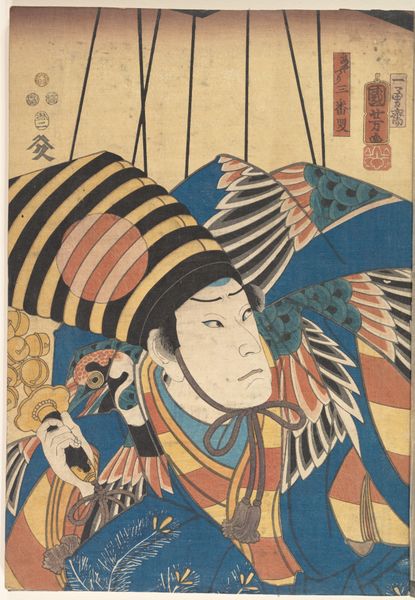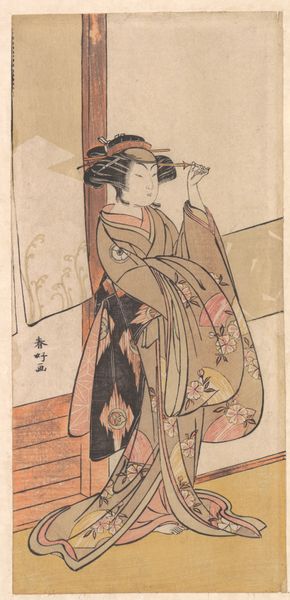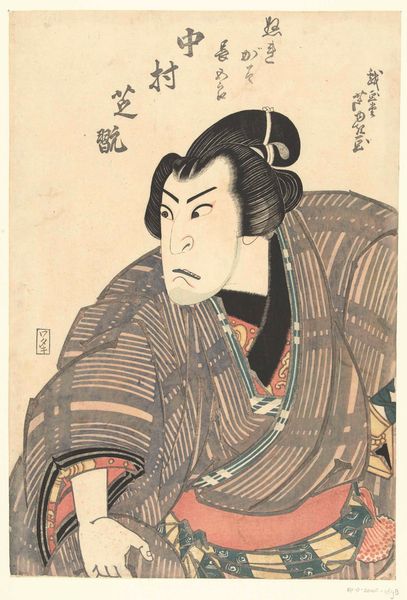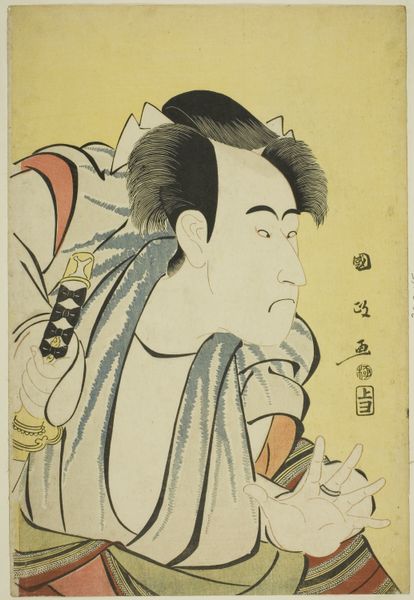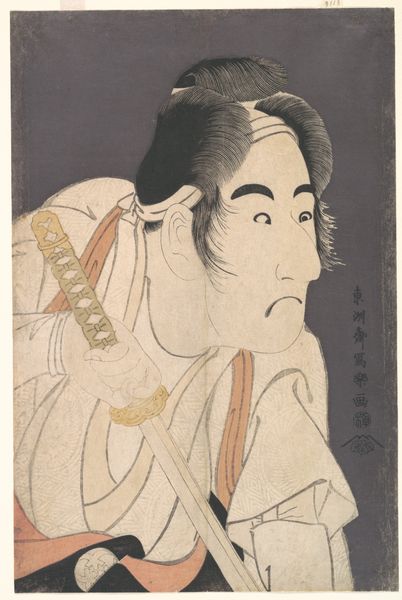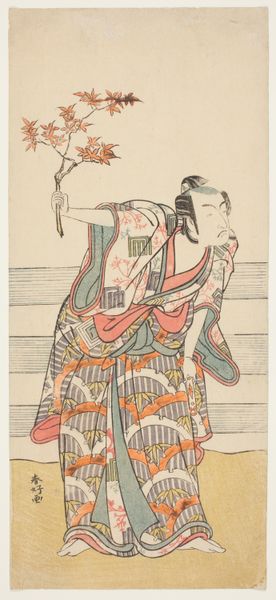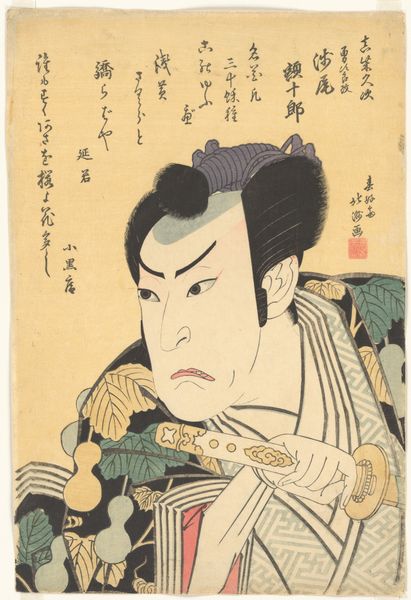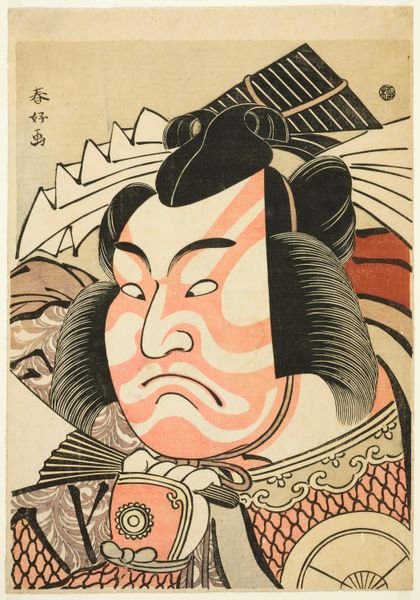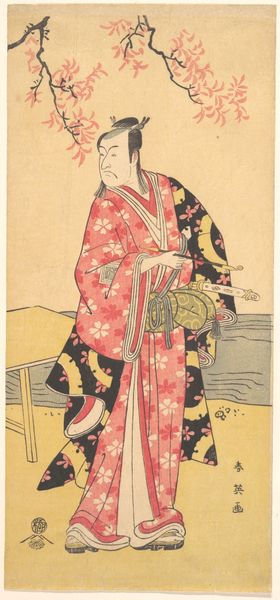
Half-Length Portrait of the Actor Ichikawa Danjuro V as Kazusa no Gorobei Tadamitsu in Act Three of the play Kitekaeru Nishiki no Wakayaka (Returning Home in Splendor), Performed at the Nakamura Theater from the First Day of the Eleventh Month, 1780 c. 1780
0:00
0:00
performance, print, woodblock-print
#
portrait
#
performance
# print
#
asian-art
#
ukiyo-e
#
woodblock-print
#
history-painting
Dimensions: 32.2 × 22.5 cm (12 11/16 × 8 7/8 in.)
Copyright: Public Domain
Editor: Here we have Katsukawa Shunko’s “Half-Length Portrait of the Actor Ichikawa Danjuro V,” a woodblock print from around 1780. It’s striking! The theatrical makeup and the elaborate wig give a real sense of performance, almost like a mask. How do you interpret the role of theatre in this piece and its time? Curator: The world of Ukiyo-e, or “pictures of the floating world,” was deeply connected to popular culture and entertainment. Kabuki theatre, as we see here, was a major source of inspiration. Consider how woodblock prints like this served as both publicity and documentation, shaping the actor’s public image and promoting the play itself. Editor: So, it’s both art and advertisement? I hadn’t considered that. Curator: Precisely! And notice how the print flattens the three-dimensional stage persona into a two-dimensional image. It raises interesting questions about representation. Does this artwork memorialize the actor, or is it another commodity circulated within a burgeoning consumer culture? How do the signifiers in this image, his expression and wardrobe, speak to the society consuming it? Editor: I guess it does more than just depict the actor. It shows what aspects of his performance the public wanted to see. Curator: Absolutely. It's a cultural snapshot, capturing the tastes and priorities of the Edo period audience and how the spectacle in the theatre had spilled onto other formats and markets of the society at large. What’s more, notice that the theatre also worked the other way, informing how one should conduct oneself in social spheres in general. Editor: I hadn't thought about it that way. I can see how this print offers insight into 18th-century Japanese culture and its values beyond just artistic expression. Thank you for opening my eyes. Curator: It works on different dimensions that shape an understanding of the piece beyond face value, yes? Always! I'm happy to delve into more treasures in our collection next time!
Comments
No comments
Be the first to comment and join the conversation on the ultimate creative platform.
